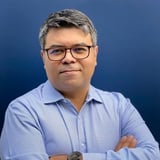Summary
For those of us in roles that aim to link experiences, see things end-to-end, or understand systems as ecosystems, the constant currents of change can make it feel like we’re endlessly adapting just to keep up. We long for a stable point of definition and clarity amid all this motion. In this talk, I’ll draw from my experience across various roles and companies to help you recognize and navigate the broader forces shaping our related fields. Using metaphors like oxbows, rivers, and estuaries, and with practical examples, I’ll share tactics for navigating change with intention, helping you stay grounded in the long game while seizing “act now” opportunities.
Key Insights
-
•
Integrative roles such as service design, product management, and UX research face unique boundary-spanning challenges involving complex cognitive and emotional labor.
-
•
Organizational maturity is nonlinear; fast-moving, product-led companies and slower, service-design-mature companies have complementary strengths.
-
•
There is a widespread 'battle of models' as different teams create overlapping sense-making frameworks like journey maps, value streams, and architectural diagrams.
-
•
Trying to force one unified model across an organization is typically ineffective; embracing diverse models and finding commonalities is more productive.
-
•
The river metaphor (water, obstacles, route, markers, safety) is powerful for understanding how to read and navigate organizational change currents.
-
•
Oxbow lakes metaphor warns that pushing hard in one direction can isolate teams or disciplines when larger economic or organizational 'floods' reshape the context.
-
•
Estuaries metaphor highlights the creative potential at boundaries where different disciplines and perspectives mix, but also the sensitivity and fragility of such ecosystems.
-
•
Patient opportunism—choosing when to leverage currents and when to push against them—is critical to long-term success and avoiding burnout in integrative roles.
-
•
Many key decisions impacting customer experience happen in engineering or architecture teams that may not traditionally include service design participation.
-
•
Perceptions of progress can be skewed; although some disciplines feel stagnated, other evolving disciplines offer opportunities for collaboration and innovation.
Notable Quotes
"You have to go from being able to deliver a message in three bullets and then turn around in the next moment and deliver a massive service blueprint or customer journey."
"Maturity is not linear; the tanker company had a lot to learn from the speedboat, and vice versa."
"Everyone is circling around similar topics but in very different ways—there’s a battle of models but more similarities than differences."
"Sometimes leaders focus so much on scanning the river they’re not observing the surroundings—the banks tell you if the river is deep or shallow."
"If you need to cross a dangerous river, you don’t paddle straight into it; you use the opposing force of the river to move forward."
"Trying to force one preeminent model for the company is a recipe for disaster—embrace models and understand why people are using them."
"It is impossible to survive in this industry by pushing against the current all the time; you must put yourself in positions to leverage the current."
"Some of the most important decisions for service design happen on whiteboards among engineers, often without service design representation."
"The estuary is highly resilient but also very sensitive to industrial waste—creative collaboration areas in organizations are similar."
"Patient opportunism means most of the time having the current at your back and only occasionally angling directly against it to avoid burnout."
Or choose a question:
















More Videos

"Our research practice was perceived largely as design testers, empathy vehicles, and policing functions — a narrow, reactive role."
Nalini KotamrajuResearch After UX
March 25, 2024

"Crabs grow by shedding their shells, which is uncomfortable but necessary."
Dean BroadleyNot Black Enough to be White
January 8, 2024

"It can be so tiring to be the only one constantly saying this has to be done differently."
Denise Jacobs Nancy Douyon Renee Reid Lisa WelchmanInteractive Keynote: Social Change by Design
January 8, 2024

"Reporting progress with data and stories opens up opportunities with stakeholders and builds credibility."
Kim Fellman CohenMeasuring the Designer Experience
October 23, 2019

"We mostly have something called a BYOE scenario or bring your own ethics."
George AyeThat Quiet Little Voice: When Design and Ethics Collide
November 16, 2022

"You need to be the connector between people trying to drive decisions and others influencing them."
Nathan CurtisBeyond the Toolkit: Spreading a System Across People & Products
June 9, 2016

"We are building cross-product research capabilities to curate a holistic understanding of agents across all workflows and touchpoints."
Greg PetroffThe Compass Mission
March 10, 2021

"Culture is the sticky glue holding us together but flexible enough to allow us to move in new directions."
Chloe Amos-EdkinsA Cultural Approach: Research in the Context of Glocalisation
March 27, 2023

"Heat maps showed users clicking on areas they thought were clickable but weren’t, resulting in click rage."
Mackenzie Cockram Sara Branco Cunha Ian FranklinIntegrating Qualitative and Quantitative Research from Discovery to Live
December 16, 2022
















